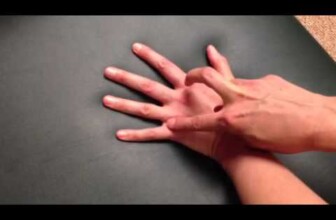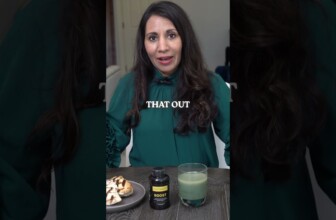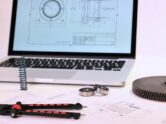Acupuncture for joint pain: Does it work?
Acupuncture, a key component of traditional Chinese medicine, involves the insertion of very thin needles through your skin at strategic points on your body and is most commonly used to treat pain. In this video, Enoch Ho discusses how acupuncture is thought to work, the potential risks of treatment, and the research evidence to support the use of acupuncture to complement traditional approaches to pain relief treatment.
0:00 Meet Margaret
1:30 What is acupuncture and what does it do?
2:54 Are there any risks to getting acupuncture treatment and who might be at risk of complications?
5:35 How are practitioners certified and who performs it?
7:05 What is the research evidence to support acupuncture as a possible pain relief treatment?
12:11 Back to Margaret
Learn more at: https://www.mcmasteroptimalaging.org/blog/detail/videos/2022/04/27/acupuncture-for-joint-pain-does-it-work
This work is supported through the McMaster Institute for Research on Aging and funds provided by the Dean and Vice-President, Faculty of Health Sciences at McMaster University.
Disclaimer: These videos are provided for informational purposes only. They are not a substitute for advice from your own health care professional. The videos may be used for not-for-profit educational purposes only. Any other uses must be approved by the McMaster Optimal Aging Portal (info@mcmasteroptimalaging.org).
Margaret, a 59-year-old retired
teacher, has chronic knee pain. She's noticed that lately
her pain has been getting worse at night, and she wants to know
what her treatment options are. A friend of hers mentioned success with
receiving acupuncture for pain management. Margaret wants to speak
with her primary care provider to discuss the possibility of her
beginning to see an acupuncturist and whether or not
it might help with some pain relief. Acupuncture, a key
component of traditional Chinese medicine, involves
the insertion of very thin needles through your skin
at strategic points on your body. And is most commonly used to treat pain. Traditional Chinese medicine explains
acupuncture as a technique for balancing the flow of energy which is believed
to flow through pathways in your body. In contrast, many Western practitioners
view the acupuncture points as places to stimulate nerves, muscles
and connective tissue. Some believe that this stimulation boosts
your body's natural painkillers. We've asked Enoch Ho to talk about acupuncture
and joint pain and the evidence behind it. Enoch is both a registered physiotherapist
and acupuncturist, and a Clinical Assistant Professor at McMaster University. Thank you so much for joining us today, Enoch. Thank you for having me. So let's start off with some basics. What exactly does acupuncture do? I think that acupuncture
is getting more popular. People are more familiar with the use of acupuncture
for pain management. Actually, acupuncture can help with some other conditions like
anxiety, depression, osteoarthritis, insomnia,
and even menstrual cramps. So some studies suggest acupuncture
can help with cancer treatment, mostly related to side effects of chemotherapy. But those areas, things,
need a larger scale of study to to help us to understand the actual benefits. Some of the conditions
that traditional acupuncture in Chinese medicine claims
that they can help like abdominal pain or things like obesity, infertility. But those areas are still new to us without enough evidence to substantiate
what they claim that they can be helpful. In North America, most of the uses for acupuncture would relate to pain management
and some of these other, other domains are areas that require more study. Actually, I agree, yes. Are there any risks or side effects with getting acupuncture treatment? The risks of acupuncture and low if you have a competent, certified acupuncture practitioner using single disposable needles. Infection is in fact the number one adverse event of acupuncture documented
in literature. The risk from this is often puncture, like lung puncture causing pneumothorax. Common side effects include soreness and minor bleeding at the location
where the needle is inserted into. Nowadays,
everyone is using a single disposable needle, so infection has much less incidence, but we still hear here and there with some problem. Some of the condition that we need to be
careful is for people who has like got a bleeding disorder or taking blood thinners. Certain acupuncture point,
like intrathecal acupuncture point, you have to be careful when you try to insert
or try to avoid those points. Pacemakers, for sure, if we are using electroacupuncture
that could cause interference. If a young lady is expecting a baby,
then again, certain points could affect the course of their pregnancy
that we should avoid too. Sounds like it would be important
with a few conditions, as you mentioned, like a bleeding disorder
or having a pacemaker, that you should definitely discuss
that with the person who is going to perform
the acupuncture in advance. And we should screen properly
before we actually apply the needles. And in the, just to recap too, while
the number one side effect historically might have been infection
related to needles, it sounds like with single-use, disposable needles,
that's really much less of an issue. Right? Right. We still hear
from some situation, for example, in
a clinic that acupuncture treatment combined with massage. So acupuncture is safe. But what happens is
the skin doesn't close fast enough and and the person went for massage
therapy after and actually opens up then the possibility that the massage oil, the sweating from the massage
could cause some trouble. You mentioned a certified acupuncturist. What,
like who actually performs acupuncture? How how does somebody get certified
exactly? In Canada, I should say in Ontario,
because we are in Ontario and I'm most familiar
with the legislation, acupuncturist is a protected title for those who are who are the member of the College of Traditional Chinese
Medicine of Acupuncture Practioners. So that is a protected title. But for other health care professionals
like chiropractor, physiotherapist, dentist,
massage therapist, they incorporate acupuncture
into their services. So, they are also allowed to practice acupuncture,
but they are not an acupuncturist. So, those they will need to meet their own individual college requirement
so that they are allowed to use acupuncture as one of their modality
to help their patients. So so so, basically a lot of health care provider, health care
professional can practice acupuncture. The full training of acupuncture,
those who claim they are ‘acupuncturists' are a member of the college in good standing. Is there evidence to support acupuncture
as a possible pain relief treatment? Well by inserting a needle
in a specific location the body, a series of events could be elicited
like producing a signal that travels along the spinal cord
to the brain and trigger
some release of neurotransmitter, like endorphin. So so that part we have
some understanding how acupuncture work. However, the benefits of acupuncture
are sometimes difficult to measure. Many people find it helpful
as a means to control a variety of pain conditions. According to the National Institutes of Health, a number of studies suggest acupuncture
works particularly well on chronic pain, such as back and neck pain,
and osteoarthritis of knee problem, or headaches.
It often reduces the incidence and severity of tension headaches
and migraines too. So for the National Institutes of Health, the stance on acupuncture is, acupuncture appears to be a reasonable option for people with chronic pain to consider. Some systematic reviews suggest that, looked at whether could
acupuncture improve pain and joint function in people with chronic knee problem. They compared true acupuncture with fake acupuncture. So fake acupuncture
could be retractable needles. Could be a needle
not put on the acupuncture point but two centimeters away from it.
So, people who received true acupuncture again,
but we see if some long-term, some short-term pain relief up to thirteen weeks and some, somewhat increasing physical function again
up to 13 to 26 weeks. So there are some many many study suggesting acupuncture actually help. So when we, just to to recap, I guess there's physiological reasons why acupuncture may have trigger benefits in terms of pain relief just by virtue of how it stimulates the nerves
and how those signals may interfere or or at least send
different signals to the brain. And then from a research standpoint,
it sounds like acupuncture is is a complementary thing
from that standpoint. So you mentioned the National Institute
of Health in the U.S. and and some of the research studies,
most of them would still recommend for chronic pain going through the sort of best evidence clinical guidelines. But I think what you're saying is
there are some systematic reviews and other evidence using controlled trials with sham sham needles versus real acupuncture,
where there was an additive benefit in terms of pain or function with
the acupuncture. Is that is that accurate? Yeah, I think so, because when we look
at acupuncture, we ask a few questions. First, is there any understanding
how acupunture works in the body? So some basic, basic science is needed. Then we need come controlled trials
to understand the benefits. And then we need to look
into the whole picture through different trials to collectively
see if there's a true benefit. And acupuncture seems to pass through all these three steps. That's why it could be an option
for people who have chronic pain, knee problem, to consider it as a modality
to help their condition. It does seem like most of the higher
quality systematic reviews
seem to relate to chronic knee pain in particular. Is there is there some reason
why the the knee would be, you know, one of the areas to study, or is it just
that there are so many people with chronic knee pain
looking for additional benefit. I think for chronic joint pain condition, so the based on prevalence, knee problem, shoulder problem, neck, back and maybe elbow, are the most common joint pain. And people seek help
from traditional western medicine approach
to a whole variety of different things, especially when the pain last
for say for one month to three, to six. It affects their function. They try everything to help
the body to get better. That's why we see more study coming for those areas. So knee is one of the most common for sure if we count the total knee replacement
every year and we know knee is common. Getting back to the patient Margaret
who is 59 and and she's having worsening chronic pain
with her knees despite optimal conventional management, how would you approach helping her? I would say, we would suggest a multimodal approach to any clinical issue including
OA of the knee or knee functional problem, which means not one single modality is going to paint a full picture. By combining the best evidence, say using medication, physiotherapy and maybe including acupuncture too, to help the patient
to regain their physical health. And of course, most important thing to me
is education. Helping the patient to get back to a healthy lifestyle,
they may benefit from weight control and understand the cause of the disease, because there's not one single option for self-management. Osteoarthritis is an
internal derangement of the joint. So it's a
long-term management. So patient education, lifestyle, weight control, is very important. We can take the pain, control the pain. We can control inflammation,
but it tends to come back and lead to
eventual degeneration of the knee joint. So how a patient can adapt
their lifestyle to stay healthy, to stay strong in the body
to protect the knee joint from further problems,
from episodes of knee pain, the thing that is the key. So this should be a multimodal method. This should be focused on lifestyle
education. It should be patient education for self-management. We actually have some other e-learning
on the Portal that talks about the benefits of exercise
and weight management as part of that multi-modal program.
#Acupuncture #joint #pain #work
source










